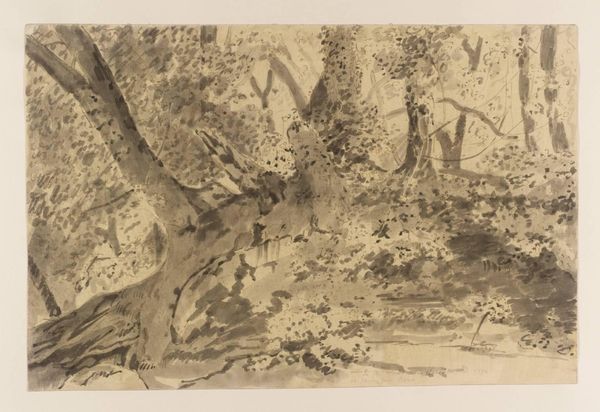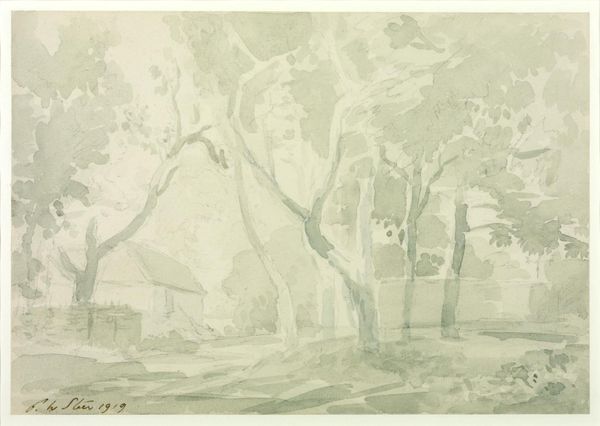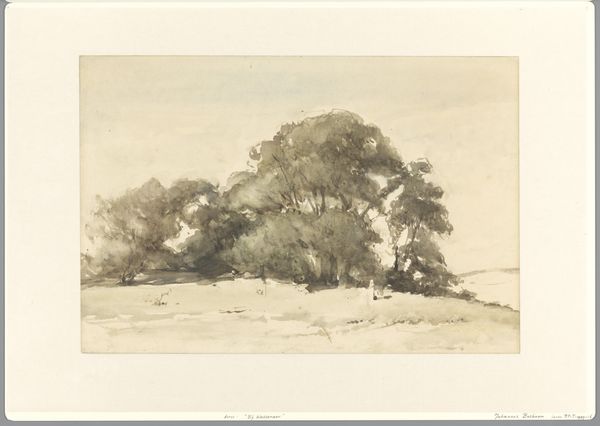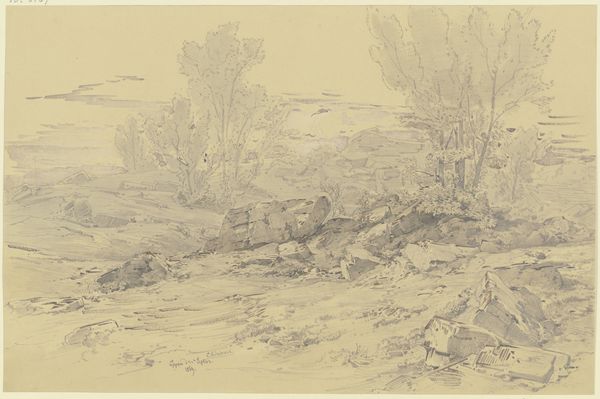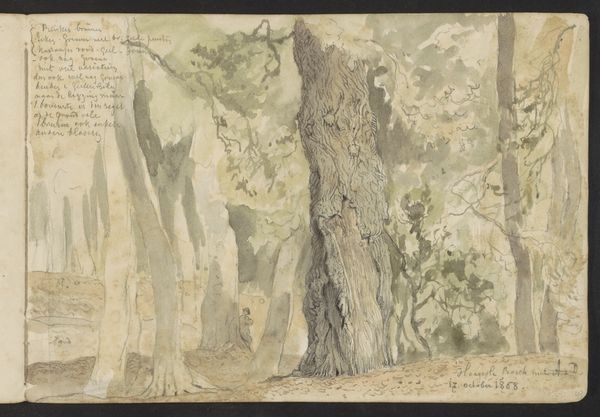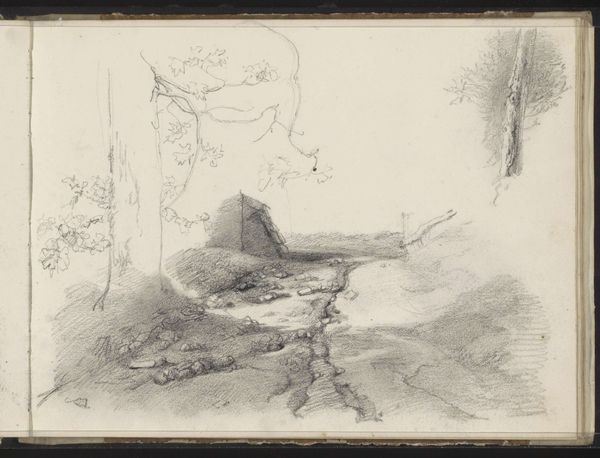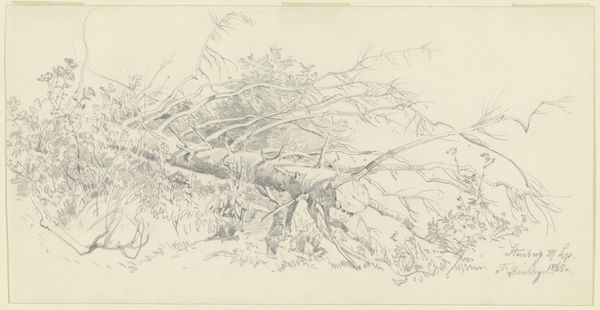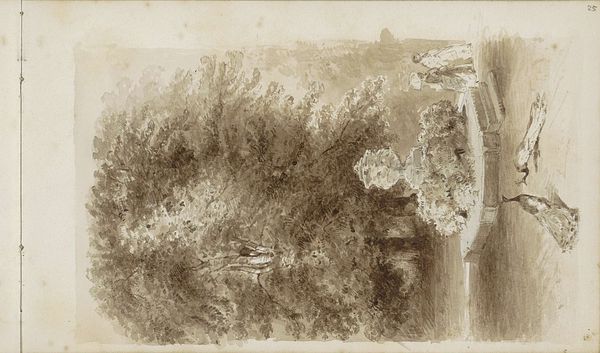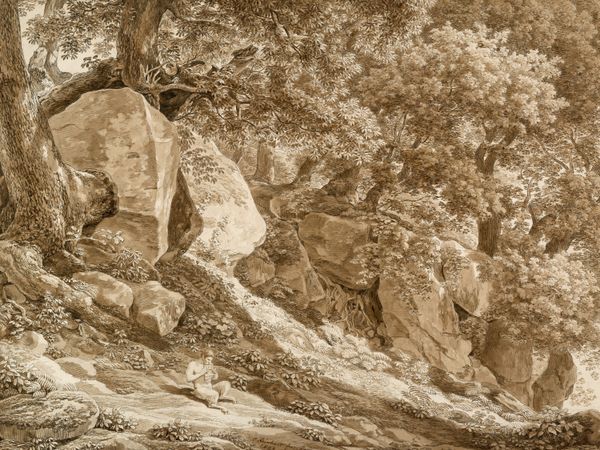
Dimensions: support: 383 x 544 mm
Copyright: CC-BY-NC-ND 4.0 DEED, Photo: Tate
Editor: So, this is John Downman's "Chigi Park near L’Arriccia," undated, watercolor on paper. It feels very much like a stage set, almost theatrical. What do you see in this piece? Curator: I see a commentary on the Romantic era's appropriation of nature. The picturesque, yes, but also consider how Downman frames nature, rendering it almost artificial. Does this taming of the landscape reflect a larger societal desire to control the wild, the other? Editor: That's interesting, I hadn't thought about that. The composition feels so natural. Curator: But is it really? Notice how the trees are positioned, the rocks arranged. It's a constructed vision. And who benefits from this construction? Who has access to this idealized landscape? Editor: So much to consider! It really does shift my perspective. Curator: Exactly. Art isn't just about beauty; it's about power, access, and how we shape the world around us.
Comments
tate 7 months ago
⋮
http://www.tate.org.uk/art/artworks/downman-chigi-park-near-larriccia-t10175
Join the conversation
Join millions of artists and users on Artera today and experience the ultimate creative platform.
tate 7 months ago
⋮
The Chigi park, near the town of Ariccia, lies to the south of Rome; a dramatic, wooded landscape, filled with fountains and gorges. Although many artists of this time made studies of the Chigi park, Downman’s concentration upon the tangled roots of an individual tree is unusual, perhaps showing more in common with the intense scrutiny of nature found in works of later artists like the Pre-Raphaelites. It is possible that Downman made this drawing using a ‘camera obscura’ - a form of pinhole camera - which he is known to have employed in at least one other landsape drawing made in Italy. Gallery label, April 2007
